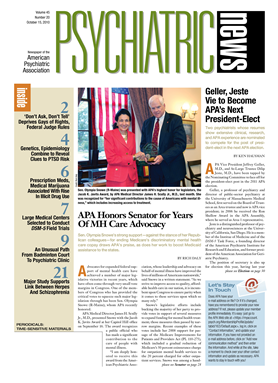A report released by the Government Accountability Office (GAO) in August regarding the Food and Drug Administration's (FDA) oversight of new drug applications concluded that the “FDA has limited the indications” for which a certain type of clinical trial known as “an inferiority trial” can be used.
The GAO report was issued in response to a request from Congress, which makes policy and funding decisions based on information provided in these reports.
Noninferiority trials are intended to determine that the effect of a new drug is not worse than that of an approved (reference) treatment. Most clinical trials, in contrast, are set up to demonstrate that one intervention (that is, drug treatment) is superior to another.
The noninferiority design is based on the difference, if any, between the effectiveness of a new drug and an approved active control. Such trials may be useful particularly when a placebo group cannot be included (for example, for ethical reasons) or when there appears to be some other advantage in contrast to the standard approved treatment (for example, fewer side effects, lower cost), but the results of noninferiority trials are not seen as credible as those measuring superiority.
Noninferiority trials are subject to inconsistent design and interpretation and provide only estimates of the effectiveness of the new drugs. Minor differences, falling within a predetermined acceptable margin, allow the new drug to be considered at least as effective as the control. Generations of noninferiority trials may result in an unintended outcome of “biocreep,” whereby successively approved new drugs become no more effective than placebo based on comparisons of sequentially less-effective controls.
The clinically acceptable noninferiority margin used for the majority of approved new drug applications (NDAs) reviewed for the report ranged from 5 percent to 20 percent, with 10 percent being the most commonly used.
The GAO examined only new molecular entities, excluding over-the-counter medications and agents used for diagnosis and those aiding absorption of other drugs. Of the 175 NDAs submitted between 2002 and 2009, 43 (25 percent) included evidence collected by noninferiority trials. The GAO noted that “many of these applications were for antimicrobial drugs, such as those treating bacteria, viral, and fungal infections.”
Of the 43 noninferiority-supported NDAs submitted, only 18 were approved, and 11 of the remaining NDAs were approved using other information to support approval. There was only one psychiatric medication for which an NDA was submitted on the basis of primary evidence from noninferiority trials. The FDA advised the potential sponsor that it “did not consider it appropriate to use noninferiority trials to support the approval of the drug for the indication being sought—the treatment of schizophrenia.”
The FDA released a draft guidance in March that included recommendations on how to select an active control in noninferiority trials, how to evaluate the results, and how to set the noninferiority margin (the absolute maximum threshold of clinical allowable difference in effectiveness from control versus that of the NDA).
The GAO examined the FDA review of the characteristics of the trials and reaffirmed that the FDA had minimized the potential for biocreep and that the new drugs were more effective than a placebo.
The GAO reported that the experts who reviewed the FDA guidance statement expressed that there should be more emphasis on the use of noninferiority trials as a means of last resort when seeking approval for new drugs. Advocates of the noninferiority study design promote the benefit of bringing new drugs to market without the ethical issues of placebo comparisons.
